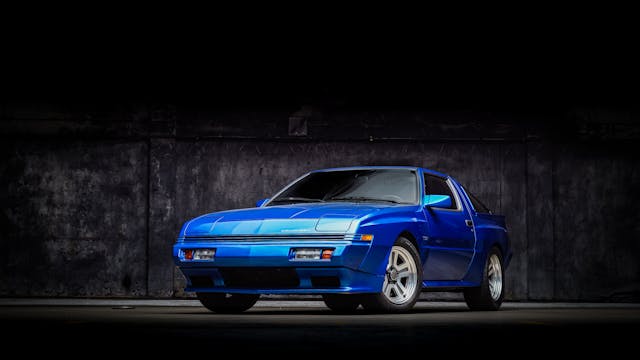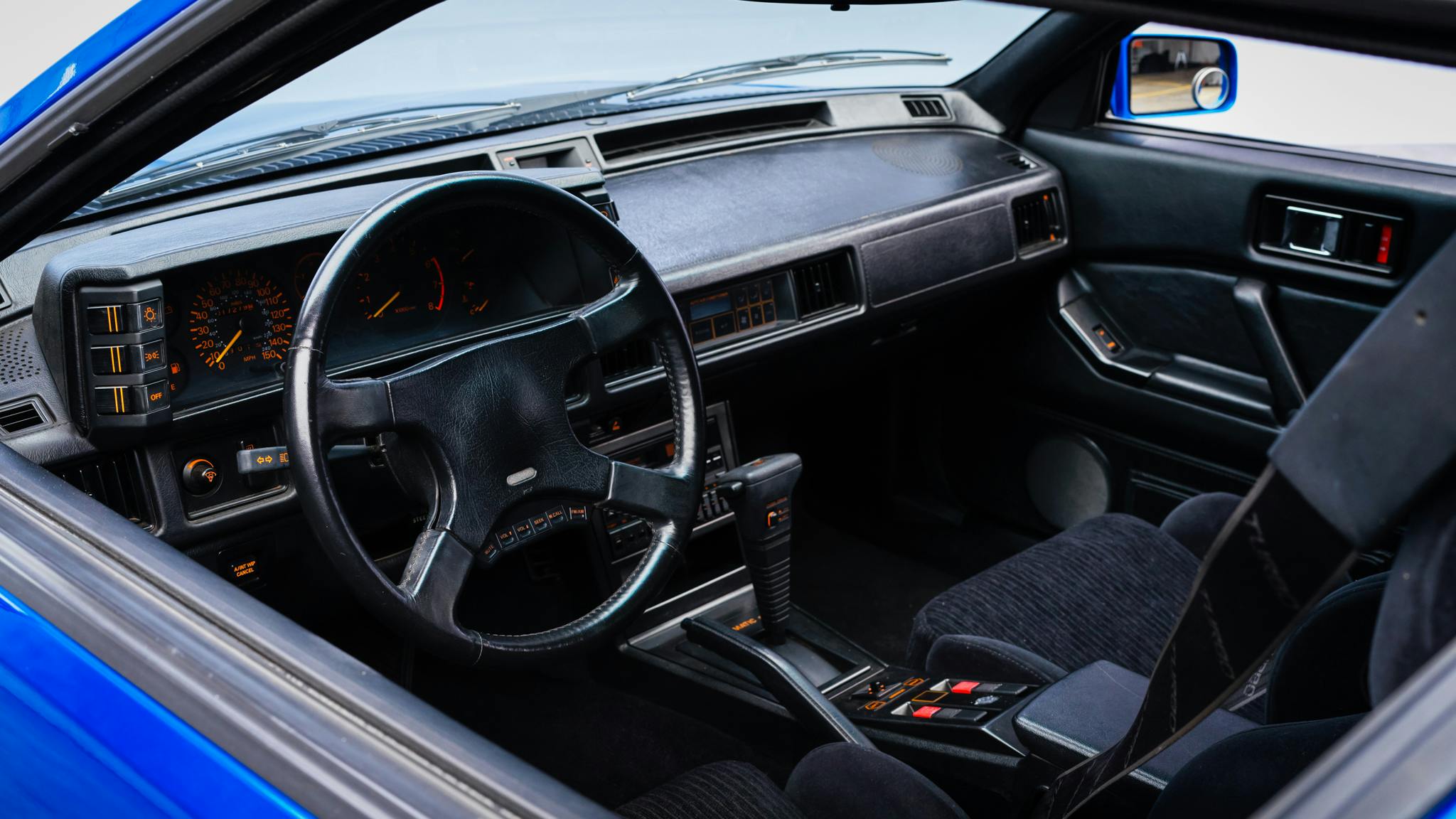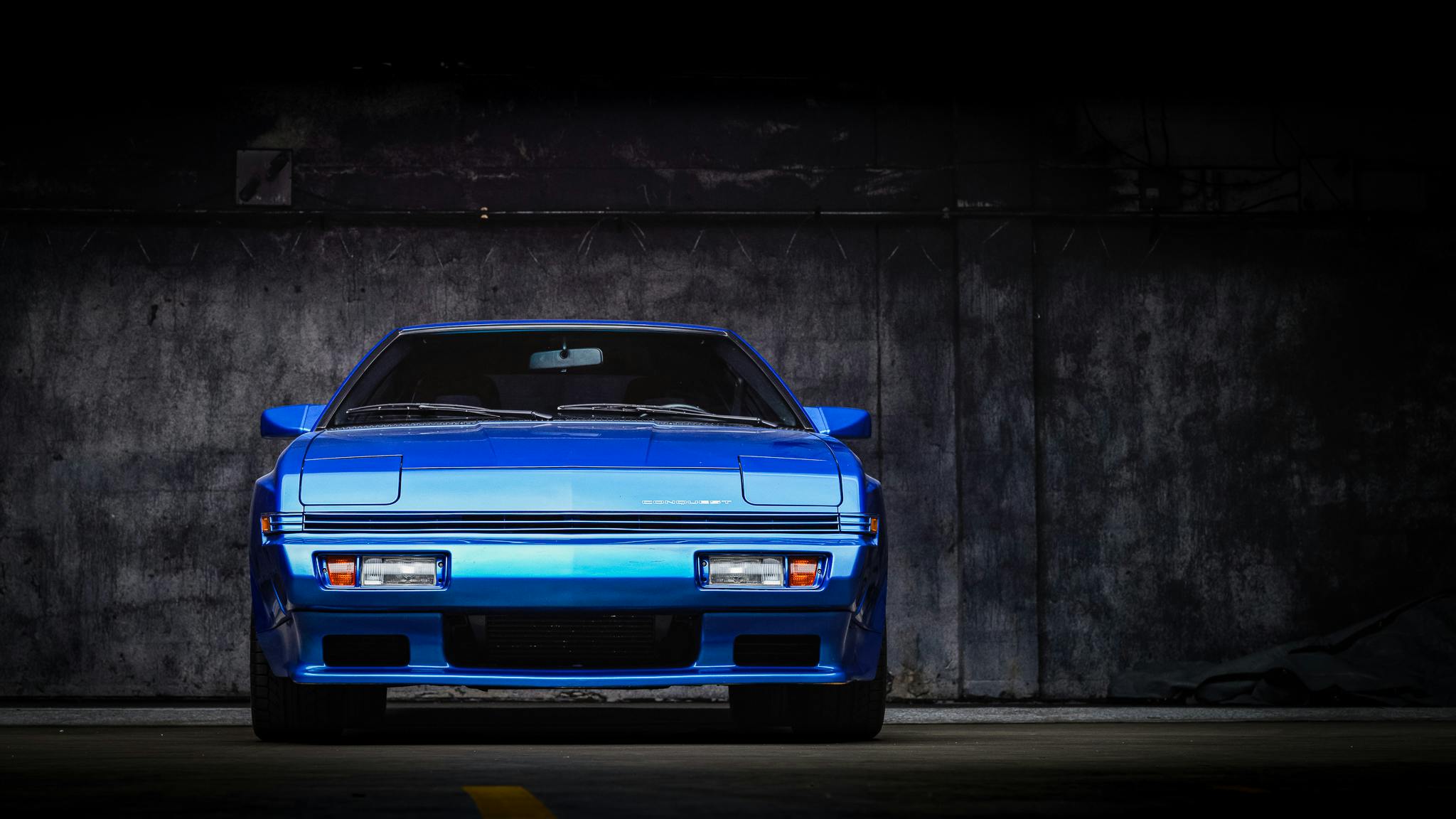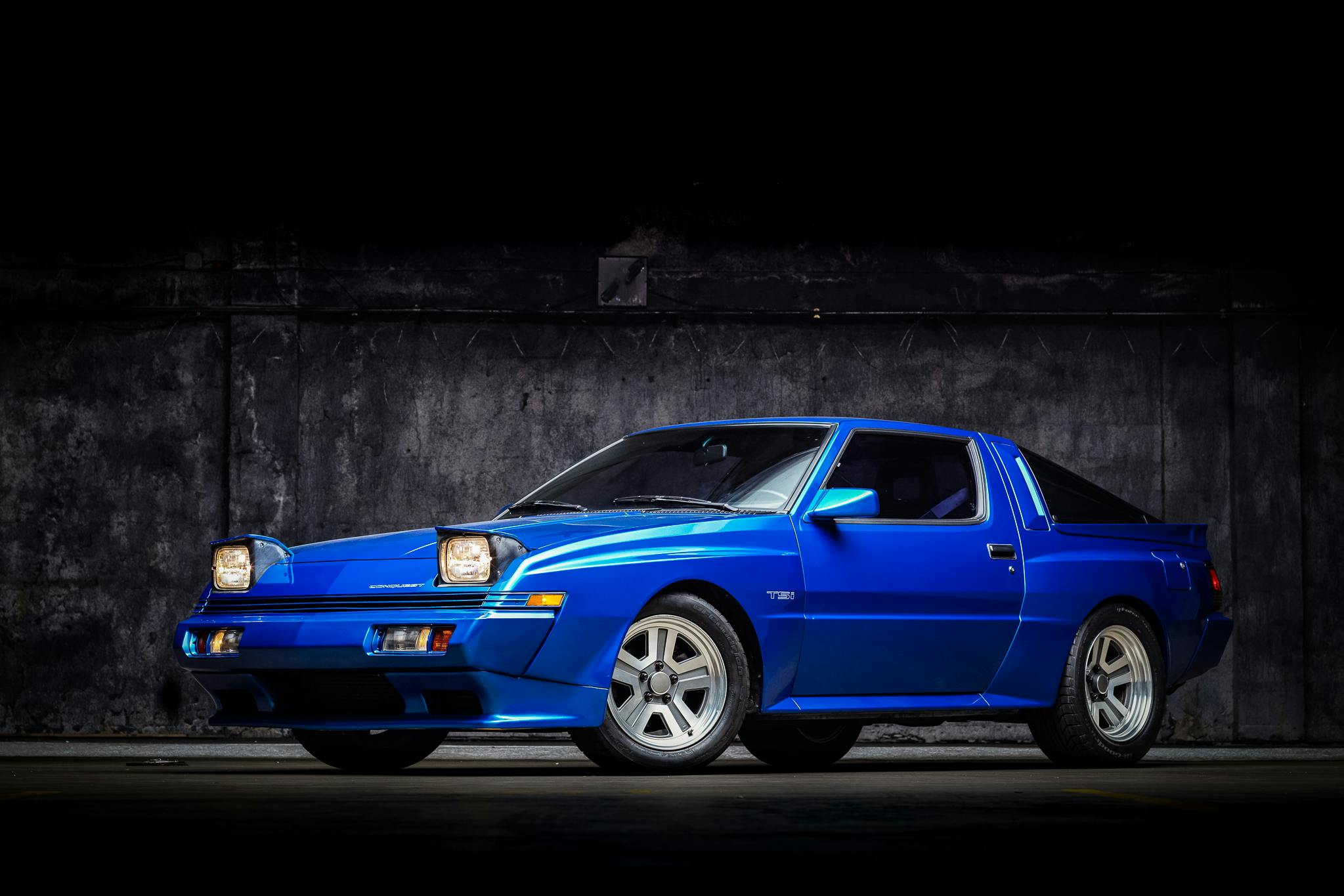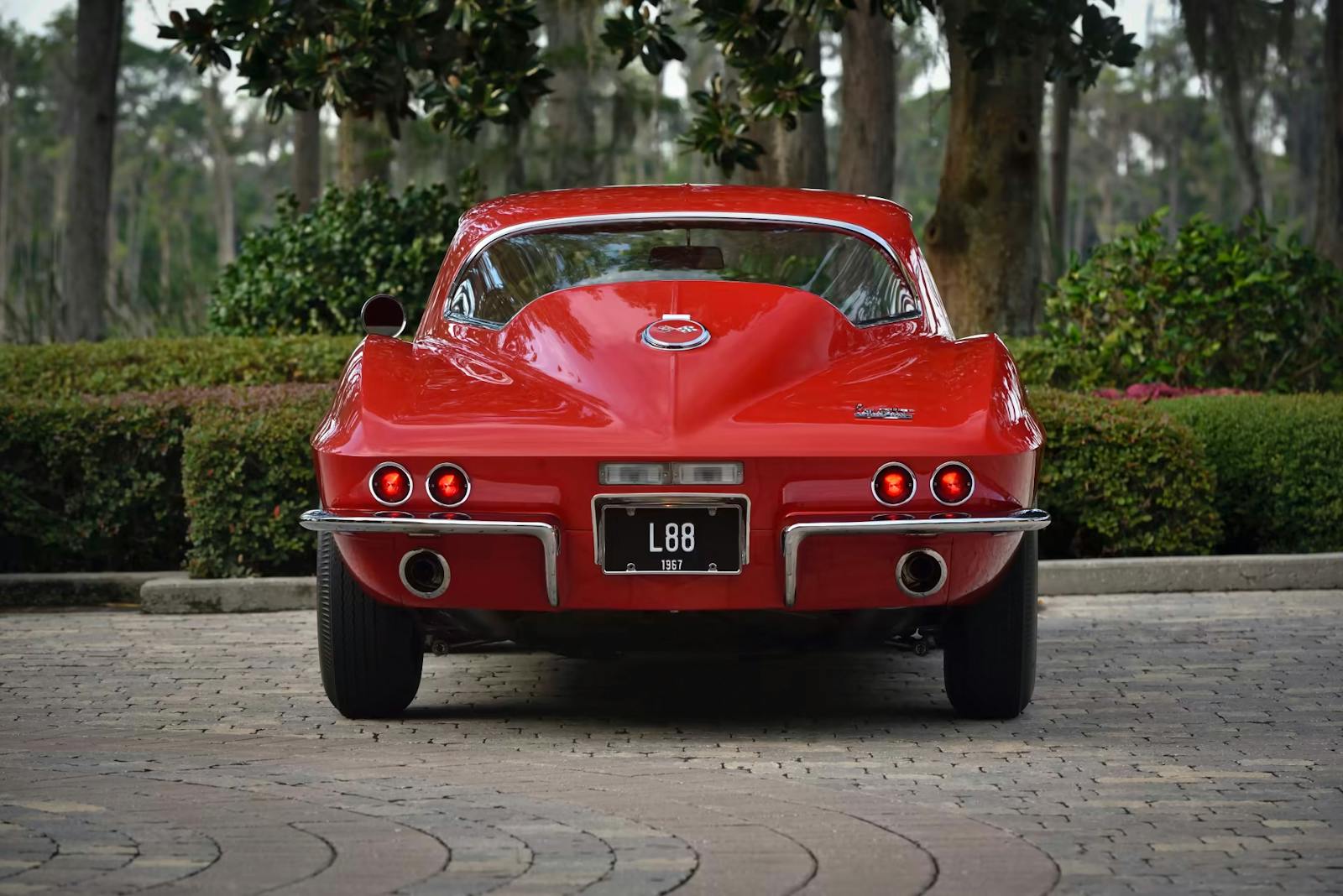Want an affordable, off-beat ’80s performance car? Reach for the Star(rion)s
We’re living in an age of $50,000 Civic Sis, of clean Miatas that outsell Corvettes, of soaring values for just about every Nissan with a “Z” in its name. It’s gratifying to see the golden age of Japanese sports cars get its due. Yet that same phenomenon means that many of these vehicles, the gateway drugs for a generation of enthusiasts, are now climbing out of reach.
Many, but not all. There are cool, interesting, fun rides whose prices have not yet gotten silly and may never achieve risible status. Two brash, box-flared, badge-engineered beauties from the Reagan/Thatcher years fit the bill. The Mitsubishi Starion and the Chrysler Conquest, affectionately known as “Starquests,” are quite a bit more expensive than they were a year ago but have appreciated later and in smaller increments than most of their hair metal–era peers. Considering how popular ’80s automotive kitsch is at the moment, that’s a surprise to us. Then again, Starquests suffer from a bit of an identity and obscurity problem, and this confusion may keep prices affordable. At the risk of letting everyone in on the secret, here’s a bit of background.
Nissan, of course, pioneered the mass-market Japanese sports car in the early ’70s. A decade later, nearly every Japanese automaker was building a sporty coupe or hatchback. Mitsubishi joined the game for the 1983 model year. Its handsome but somewhat generic Etch A Sketch–style bodywork hid a remarkable degree of sophistication: The Starion’s 2.6-liter four-cylinder was one of the earlier combinations of turbocharging and electronic fuel injection. Leaning hard into the all-things-turbo craze of the day, one Starion ad boasted “ultimate refinement of Turbo Age technology … the entire car is ‘turbo tuned.’” Later Starquests even have bright “Turbo” script screaming at you from their motorized seat belts. The car also boasted an independent rear suspension, a limited-slip differential, and five-speed manual. One of the early, narrow-body cars also snagged a prominent role in the 1984 movie Cannonball Run II, with Jackie Chan and Richard Kiel (Jaws from the James Bond movies) evading the authorities in a customized black Mitsubishi.
Because the ’80s fell right in the midst of Mitsubishi’s long and fruitful fling with Chrysler, there were also Plymouth/Dodge/Chrysler versions of the Starion, called the Conquest. Other than some trim and badging, the Chrysler versions were mechanically identical, and all Starquests rolled out of Mitsubishi’s plant in Okazaki. To its credit, Chrysler didn’t try to take credit for the car. One TV ad from the era features a bright red Conquest in a cage being lowered onto the docks of a cargo ship, with the narrator warning of the “a fire-breathing creature Chrysler has imported from Japan.”
Things got even better in 1986, with the Starquest’s first (and only real) major revision. Under the hood, Mitsubishi threw in an intercooler, bumping performance to 178 hp and 223 lb-ft of torque. If you’re a firm believer that more letters equals more better in an ’80s performance vehicle, these later Starquests were dubbed Starion “ESI-R” and Conquest “TSi.” Wider wheels and bulging fender flares likewise called attention to the extra grunt while making the car look something like a Porsche 944 with some creases ironed into it. At around $17,500 in either Mitsubishi or Chrysler guise (the Plymouth and Dodge versions were axed with the refresh), the Starquest was far cheaper than the front-engine Porsche, not to mention more affordable than its closer-to-home rivals like the Mazda RX-7 Turbo and Nissan 300ZX Turbo.
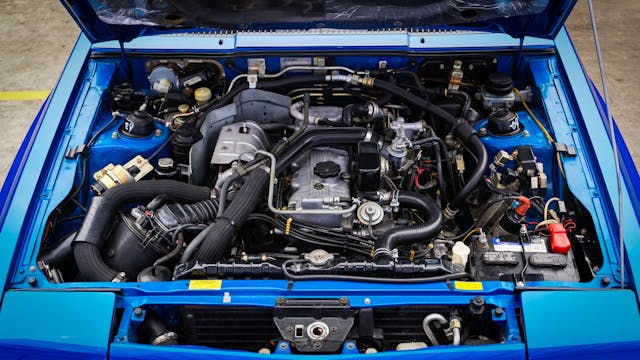
In 1988, the Starquest gained another 10 hp and 11 lb-ft, and performance-minded buyers could tick the box for a Sport Handling Package with eight-way adjustable shocks and wider wheels. In motorsport, meanwhile, a Starion ESI-R won the SCCA’s Escort Endurance Series, and Starions were moderately successful in touring car competition in Europe and Japan.
They enjoyed far less success with customers. Even Mitsubishi played into this, with TV ads boasting: “You don’t see a sports car like this every day. And with so few available, you probably won’t.”

Like other Japanese manufacturers, Mitsubishi aimed even higher, both in terms of technology and price, in the 1990s. But whereas other carmakers continued to invest their established, well-known badges (Supra, RX-7, 300ZX), Mitsubishi/Chrysler went in a different direction. Rather than build a next-generation Starion/Conquest, they introduced the Mitsubishi 3000 GT/Dodge Stealth, and effectively replaced the Starion with the new, Illinois-built Mitsubishi Eclipse/Eagle Talon/Plymouth Laser. These later Mitsubishi models went on to bigger sales figures and had a much larger cultural impact.
That short, relatively obscure run probably explains why Starquests are so cheap. It probably doesn’t help that the Mitsubishi brand is on life support in North America and that Stellantis née Chrysler is (understandably) more interested in recalling its 1960s performance heritage. Until very recently, even the best-preserved Starquests with the more desirable fat flares and intercooled engines could be bought for well under five figures. Over the past 12 months, however, Starquests appear to be moving beyond cult status. Back in mid-2021, these cars saw their first significant increase in the Hagerty Price Guide since we started tracking them, with average condition #2 (Excellent) values growing by 26 percent. And from January 2021 to today, median #2 values for Starquests are up 45 percent. The current #2 value for a Starion in the Hagerty Price Guide is $18,600. The captive import Conquest is actually worth 3 grand more, at $21,700.
There aren’t a lot of clean, unmodified Starquests left, but—no surprise—several have found their way to Bring a Trailer in 2020 and 2021. Since 2019, 11 Starquests have brought over 15 grand on that platform, and seven of those have brought over 20, including a mint Fiji Blue 1988 Conquest that brought $33,365 back in May 2021. Mecum sold a similarly clean, 41,662-mile Conquest in Houston in April for $26,400. That’s a big jump from what we’re used to seeing with these cars, but Starquests still cost comfortably less than most of its better-known contemporaries.
They seem likely to remain attainable. Although they have lower production numbers (aka rarity), they lack the name recognition or relevance to established car culture that boost values for RX-7s, 300ZXs, or even Eclipses. Nor do they enjoy as large a support system. There are some caveats, then, but if you’re on the hunt for a four-wheeled ’80s nostalgia-mobile and want something a little different and much cheaper, reach for a Starquest.
